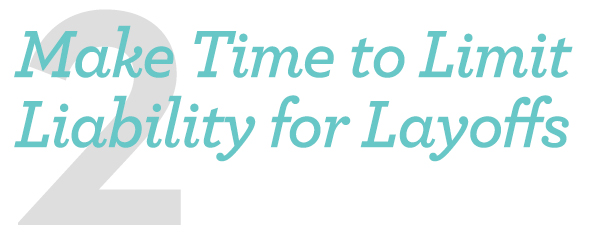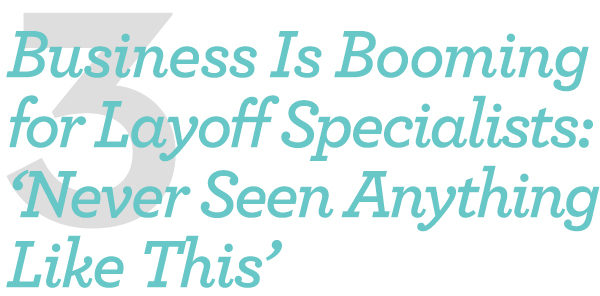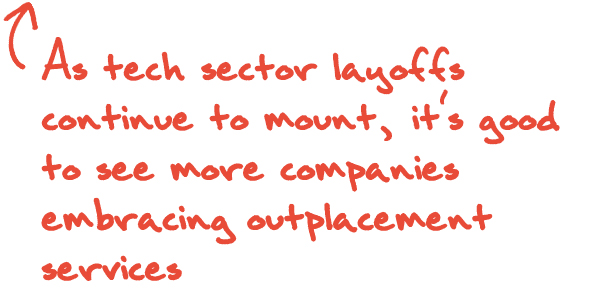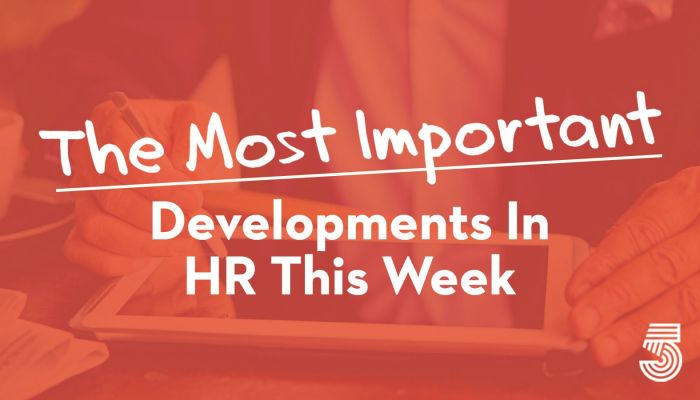The M.I.D., as we call it, is curated by our editorial team from more than 50 news sources. Like a lot of good ideas, this started as something I wanted for myself. If I can’t read everything, I at least want to stay abreast of the most important developments.
This week in HR, we learn that the metaverse is coming to HR and that we need to up our interviewing game, HR’s prudence and persistence can really pay off with layoffs, the tech sector embraces outplacement, and motivation got a look from HBR.


The fact that Facebook changed its corporate name to Meta should send a signal about what at least one tech company sees for the future of digital interactions. The metaverse is an increasingly talked-about topic that refers to an alternate reality online — blurring the lines between the physical and digital environment. Rajat Kohli leads the end-to-end aspects of strategic business consulting and advisory engagements for Zinnov, a global management consulting firm with eight offices worldwide. “Early anecdotes show that the metaverse will influence the HR function immensely and will have strong implications across the employee life cycle, including recruitment and onboarding, employee engagement, and learning and development,” Kohli said. But the implications will be broader than for just the HR function itself. It will have a massive impact on the type of knowledge, skills, and abilities companies will require across all types of positions. “The day Meta announced that it was hiring around 10,000 people for its platform in Europe, companies across the globe started strengthening their future workforces,” Kohli said. “More than 40% of service providers started hiring top talent to build their metaverse vision within key technology areas including AI, Internet of things, digital twin, blockchain, and 3D modeling, among others.” SHRM


Layoffs open employers up to the possibility of lawsuits under a wide range of laws, including the Worker Adjustment and Retraining Notification (WARN) Act, state “mini-WARN” requirements and the Older Workers Benefit Protection Act (OWBPA). Nonetheless, employers can adopt some practices to limit their potential liability. Here are a few examples of such practices in this second of a three-part series on layoffs. Ted Hollis, an attorney with Quarles & Brady in Indianapolis, identified a number of steps employers can take to limit liability. SHRM


Unfamiliar with the layoff process, overwhelmed tech firms are flooding experts with requests for help. “HR departments are scrambling,” one CEO said. Coming into the year, business was slow for the country’s layoff experts, as it had been for much of the past decade. Outside of a short period of tumult in 2020 at the beginning of the coronavirus pandemic, the U.S. economy had continued to roar along. Jobs were plentiful, layoffs were at a 52-year low, and the “Great Resignation” had led to worker shortages. Layoff-focused companies help with a variety of areas to make a difficult process run smoothly. They help identify priorities and figure out the layoff list; ensure the layoffs comply with local law and do not disproportionately target underrepresented minorities; come up with a day-of communications plan; and make sure people receive the correct amount of severance. They sometimes also provide “outplacement” services, which help laid-off employees find a new job through outside training and guidance. Vice


Accelerating layoffs and fears of an upcoming recession are causing employee anxiety about job security, new data finds. According to Lemon.io, a marketplace of vetted software developers, searches for “Will I lose my job in a recession?” are up a staggering 9,900% in the past 12 months. It’s undoubtedly been an employee-driven market in recent months, with scores of workers leaving their jobs in a phenomenon dubbed the Great Resignation. But as the economic climate shifts — inflation has been at a 40-year high, for instance — employee confidence is starting to shift too. A staggering number of employees are afraid of losing their jobs if a recession occurs, new data finds. That’s causing increased amounts of employee anxiety, says Aleksandr Volodarsky, CEO at Lemon.io, as well as causing some to go above and beyond in their duties, which only may result in burnout and dissatisfaction. It also may lead to diminished productivity and disengaged workers. HR leaders have an essential role to play right now as a result, Volodarsky says, arguing that communication and transparency are keys regarding the economy and the potential for layoffs. HRE


It’s not surprising to learn that employee motivation is flagging these days. Fear of a slowing economy has layoffs up 39% in the second quarter of 2022, bringing the year’s total to more than 133,000. On top of that, the great resignation continues to lead employees to exit toxic workplaces characterized by uncaring leaders and poor advancement opportunities. Rising inflation has increased prices at supermarkets and gas stations. Combined with an increasingly polarizing political landscape and ongoing, troubling global events, you have the perfect motivation-draining cocktail. If your team is showing signs of lost motivation, there are helpful steps you can take to help them rediscover it. But it’s important that you start with an accurate assessment of what is actually happening. First, understand that motivate isn’t a verb. It’s a choice. It’s not something you can do to or for others. What you can do is create the conditions in which those you lead choose to be as motivated as circumstances will allow. Keep in mind: There’s no one-size-fits-all approach to this. Members of your team may be struggling with different feelings and challenges. HBR










